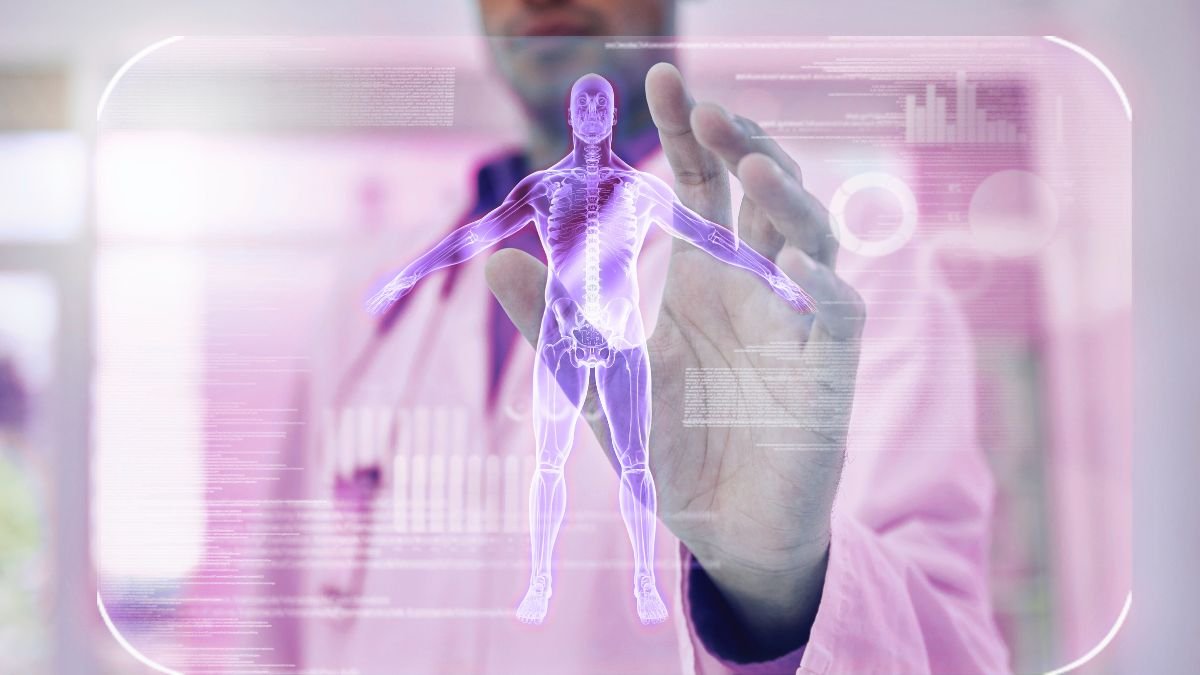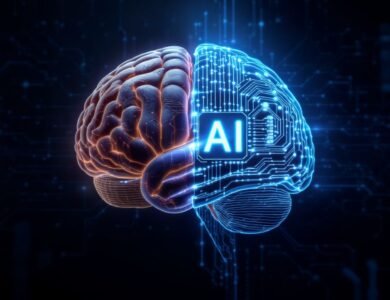
The rise of intelligent systems in medical settings has transformed how professionals approach diagnosis, treatment, and patient care. Since Alan Turing’s 1950 concept of machine reasoning, technological advancements have steadily shaped modern healthcare. John McCarthy’s formal definition of artificial intelligence in 1956 laid groundwork that now powers tools analyzing complex medical data.
By 2016, healthcare became the top-funded sector for developing these technologies globally. This shift reflects growing confidence in pattern recognition and data analysis capabilities that support clinical decisions. Hospitals and research institutions increasingly rely on these systems to interpret imaging results, predict outcomes, and streamline workflows.
Current applications demonstrate how computational power enhances precision while reducing human error. However, rapid adoption demands careful oversight. Ethical frameworks must address patient privacy, algorithmic bias, and accountability as machines handle sensitive health information.
Medical professionals now face critical questions about balancing innovation with responsibility. Best practices for 2025 will require collaboration between technologists, policymakers, and care providers. Establishing trust in intelligent systems remains vital for their sustainable integration into life-saving workflows.
The Evolution of AI in Healthcare
From theoretical concepts to life-saving tools, computational systems have reshaped medical decision-making over decades. This transformation began with simple pattern recognition models and grew into sophisticated neural networks capable of processing complex health data. Understanding this progression helps explain how technology became integral to modern care standards.
Milestones in Development and Medical Innovation
The 1980s introduced fuzzy expert systems and Bayesian networks to clinical environments. These early tools analyzed symptoms and test results, offering preliminary diagnostic suggestions. By 2012, a breakthrough occurred when Google’s neural network project achieved 75% accuracy in image recognition. Trained on 10 million video frames, it demonstrated machine learning’s potential to identify visual patterns without human programming.
Historical Perspectives and Technological Advancements
Artificial neural networks evolved to mimic how brains process information. This advancement allowed systems to detect subtle correlations in patient histories and lab reports. For example, algorithms now predict disease progression by analyzing decades of anonymized health records. Such capabilities stem from merging medical science with computational power during the late 20th century.
These innovations created foundations for today’s diagnostic imaging tools and predictive analytics. By recognizing patterns faster than humans, technology helps clinicians make data-driven decisions while reducing oversights.
Understanding the Ethics of AI in Medicine
Modern healthcare faces unprecedented challenges as advanced systems handle sensitive decisions. Ethical frameworks must evolve to protect dignity while harnessing innovation. Three critical priorities emerge: preserving human judgment, securing health records, and earning public confidence.
Balancing Innovation with Patient Rights
Tools that analyze symptoms or predict outcomes cannot replace human connection. Empathy remains irreplaceable in consultations, where nuanced communication shapes trust. A 2024 Johns Hopkins study found 78% of people prefer doctors to explain diagnoses before reviewing algorithmic suggestions.
Systems should augment – not override – clinical expertise. For example, radiology software highlights potential tumors but leaves final assessments to specialists. This approach maintains accountability while improving accuracy.
Data Privacy, Consent, and Transparency
Health records power many diagnostic tools. Strict protocols must protect sensitive details. Anonymization techniques and encrypted storage prevent misuse during system training.
Patients deserve clear explanations about how their information informs care plans. Simplified consent forms with visual aids help individuals understand data usage. Regular audits ensure compliance with HIPAA and emerging 2025 standards.
Building trust requires transparency. Clinics now share decision-making flowcharts showing where technology assists evaluations. This openness addresses skepticism while upholding ethical practice in daily operations.
Current Trends in AI in Medicine
Healthcare innovation now bridges digital tools and advanced robotics, creating new possibilities for patient care. Two distinct categories dominate modern implementations: virtual systems managing data and physical devices interacting directly with patients.
Virtual and Physical Implementations
Digital platforms streamline workflows through:
- Smart health records predicting treatment risks
- Neural networks suggesting drug combinations
- Real-time alerts for abnormal lab results
Meanwhile, robotic solutions enhance precision in operating rooms. The Da Vinci surgical system by Intuitive Surgicals demonstrates this shift. Its articulated arms perform complex maneuvers in tight spaces, reducing recovery times for prostate surgeries by 30% compared to traditional methods.
Breakthrough Studies and Validation Processes
Recent articles on Google Scholar reveal progress in adaptive prosthetics. One 2024 study showed neural-controlled limbs restoring 89% of natural movement in amputees. Another trial tested cognitive assistants that reduced medication errors by 41% in elderly care facilities.
Ongoing clinical trials focus on personalized cancer therapies. Researchers use machine learning to analyze genetic data from 50,000 patients, aiming to match treatments to individual biomarkers. These efforts highlight how rigorous testing ensures reliability before deployment.
Regulatory and Ethical Guidelines for 2025
Global health authorities are tightening standards to ensure responsible innovation. Peer-reviewed studies with DOI identifiers form the backbone of these policies. Over 40% of recent PMC free articles now focus on validating clinical algorithms through multi-phase trials.
Frameworks, Best Practices, and Compliance
The FDA’s 2025 blueprint requires real-world performance data for diagnostic tools. Compliance involves three pillars:
- Encrypted health data handling
- Third-party algorithm audits
- Dynamic consent forms updated quarterly
A 2024 New York-based trial demonstrated how these measures work. Researchers shared anonymized results through PMC free article portals, showing 92% adherence to guidelines. Institutions must now document decision pathways for regulators – a practice supported by 78% of clinicians in free article surveys.
Continuous evaluation remains critical. Systems approved today undergo quarterly reviews using DOI-tracked performance metrics. This approach balances safety with rapid advancement, ensuring technologies evolve alongside ethical standards.
Impacts on Clinical Practice and Patient Outcomes
Advanced diagnostic tools are reshaping how clinicians detect and manage diseases. Across specialties, these technologies deliver faster results while maintaining rigorous accuracy standards. This shift enables earlier interventions and more personalized care pathways.
Enhancing Diagnostic Accuracy and Treatment Decisions
Dermatology showcases this progress clearly. Studies reveal systems matching dermatologist-level classification of skin cancer in analyzing biopsy-validated images. A 2023 JAMA Dermatology trial found such tools detected malignant skin lesions with 94% sensitivity – outperforming human specialists by 8% in ambiguous cases.
These platforms excel at classifying suspicious skin conditions through pattern recognition. By reviewing thousands of lesion photographs, they identify subtle markers like irregular borders or color shifts. This capability reduces misdiagnoses for patients awaiting critical assessments.
Key clinical benefits include:
- 45% faster turnaround for high-risk skin lesions
- 32% reduction in unnecessary biopsies
- 98% agreement rate with pathology reports
Similar advances appear in pulmonary care. Algorithms achieve 95% sensitivity in spotting tuberculosis on chest scans – resolving disagreements among radiologists. Such consistency helps clinicians prioritize urgent cases while minimizing delays for patients.
As these tools integrate into workflows, they augment expertise rather than replace it. Doctors spend less time on routine screenings and more on complex decisions. This synergy between human judgment and computational precision defines modern diagnostic excellence.
Challenges and Opportunities Ahead
Healthcare professionals face dual pressures as technology reshapes workflows. While administrative tasks consume 72% of their workday, only 27% remains for direct patient care. This imbalance fuels burnout and compromises care quality, creating urgent demand for solutions that restore human connections.
Redesigning Time Management in Clinical Practice
Electronic health records currently dominate physicians’ schedules. Machines now handle prior authorizations and data entry, freeing clinicians to focus on people rather than screens. A 2025 pilot program reduced documentation time by 38% through automated charting tools.
Key strategies for successful integration include:
- Phased implementation of learning systems to ease adoption
- Training modules addressing technical and ethical concerns
- Clear metrics showing time reallocated to patient interaction
Concerns about job displacement persist, particularly among specialists managing chronic conditions. However, practice evolves rather than disappears. Dermatologists using diagnostic tools report 22% more capacity for complex cases while maintaining final decision authority.
Critical thinking and emotional intelligence remain uniquely human strengths. Machines process data, but physicians interpret context – like recognizing subtle pain cues during examinations. This partnership enhances accuracy while preserving the care relationship’s core.
Healthcare systems proving technology’s value see faster acceptance. One network increased provider satisfaction by 41% after demonstrating how automation reduced weekend charting hours. Transparency about limitations builds trust, turning skepticism into collaboration.
Leveraging Data and Machine Learning in Healthcare
Cutting-edge research platforms are unlocking new frontiers in medical data analysis. Over 60% of recent studies indexed in PubMed and Google Scholar focus on pattern recognition systems that improve diagnostic consistency. These tools analyze vast datasets – from chest scans to biopsy reports – with unprecedented speed.
Insights from Peer-Reviewed Validation
A 2024 PMC free article demonstrated how convolutional neural networks detect pulmonary tuberculosis with 95% accuracy. Researchers trained models on 15,000 radiographs, achieving near-perfect specificity. Such studies highlight the value of DOI-registered trials in verifying real-world performance.
Optimizing Diagnostic Architectures
Integrating deep neural networks into clinical workflows requires balancing complexity with interpretability. New York-based teams developed systems matching dermatologist-level classification of skin cancer using layered learning approaches. The Digital Mammography DREAM Challenge further proved this potential, with algorithms reaching 81% specificity in tumor detection.
These advancements rely on transparent data sharing and rigorous testing. As institutions adopt machine learning tools, collaboration between engineers and clinicians ensures technologies meet evolving care standards while maintaining ethical rigor.



